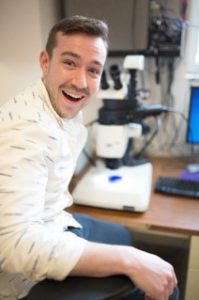Story by Sydni Anderson, Staff writer
Photos courtesy of Gary Zeruth
Opportunity abounds for Murray State students who spend time between classes hovering above lab benches and recording ink notes as they gaze at a test tube. Some do it for the experience and others for the class credit, but a common theme is the love of science. Student researchers dedicate hours from their weeks helping professors on various projects.
Decades ago, this opportunity would only be available for a select few, but as times change the gates for research widen. Five Murray State chemistry professors and seven biology professors offered information help create a gender profile of what undergraduate research looks like in the college of science.
The numbers were collected in the current semester and provide a general overview of the gender ratios of biology and chemistry researchers at Murray State. The data does not include graduate researchers or students on a research hiatus for the semester.
Out of 47 undergraduate researches, 28 were female. From the data collected, this signifies a female majority of roughly 57 percent. However, when breaking the numbers down between chemistry and biology the results change.
Of the 22 reported undergraduate chemistry researchers, ten or 46 percent were female. On the other hand, women made up 72 percent of the biology researchers. Murray State chemistry professor Kevin Miller was a volunteer in the profile. His lab studies organic and polymer chemistry and has a 50:50 split of male to female undergraduate researchers. He said in his past seven years at the university this trend has held steady.
“This is pretty much par for the course where I’ve had a 50:50 split for a group of 25 total undergrad and grad students,” Miller said.
Biology professor Chris Trzepacz said there are typically more women researching in his lab. He currently has three female undergraduate researchers studying enzymes and locating genes in a model species of nematode.
“I have probably had close to two dozen students work in my lab, and I would guess about 75 percent are women,” Trzepacz said.
According to data from the Department of Education, women were roughly 60% of biology undergraduates in 2010. However, the number seemed to drop for the physical sciences, which includes chemistry. Roughly 40 percent of physical science undergraduates were women. It is also important to note that women made up more than 75 percent of health professions majors; the group includes pre-medicine and pharmacy majors, which may also take to undergraduate research to build their resumes.
While Murray State numbers may not perfectly fit into the national averages, these statistics provide rationale for the difference in the ratios of female undergraduates in biology and chemistry research laboratories.




